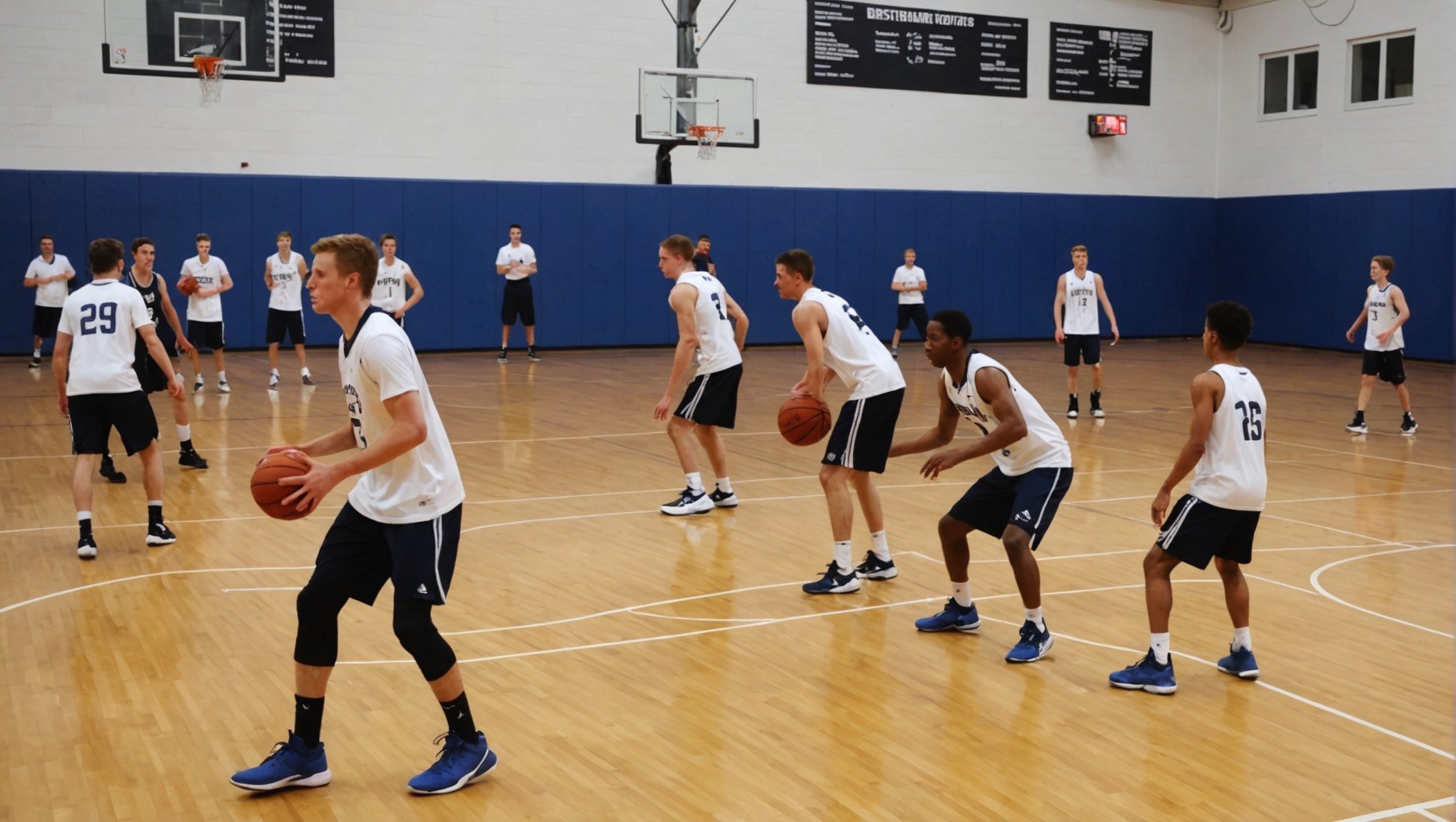Top Warm-Up Routines to Elevate Performance for Basketball Players in the UK
When it comes to basketball, a well-structured warm-up routine is crucial for optimizing performance and preventing injuries. For basketball players in the UK, understanding the best warm-up practices can make a significant difference in their game. Here’s a comprehensive guide to help you elevate your performance with the top warm-up routines.
The Importance of Warm-Ups in Basketball
Before diving into the specifics of warm-up routines, it’s essential to understand why they are so vital. Warm-ups serve several key purposes:
Also read : Unveiling the Impact of Sports Psychology on Training UK Basketball Athletes
- Injury Prevention: Proper warm-ups increase blood flow and temperature in the muscles, tendons, and ligaments, reducing the risk of injury. As Dr. John Smith, a sports medicine specialist, notes, “A thorough warm-up can significantly lower the risk of acute injuries by preparing the muscles and joints for the upcoming physical demands”.
- Performance Enhancement: Warm-ups prepare the body for high-intensity activities by increasing heart rate, respiration, and muscle temperature. This preparation can improve strength, speed, and endurance.
- Mental Preparation: A structured warm-up can also help athletes mentally prepare for the game, focusing their minds and building confidence.
General Warm-Up: Setting the Foundation
The first phase of any effective warm-up routine is the general warm-up. This phase aims to increase the heart rate and blood flow to the muscles.
Light Cardiovascular Exercises
- Jogging: A light jog around the court or a short sprint can get the heart rate up and warm the muscles.
- Skipping: Skipping rope is another excellent way to increase cardiovascular activity while also improving coordination.
- Cycling: If available, stationary cycling can be a great alternative to jogging or skipping.
Dynamic Stretching
Dynamic stretching involves moving the joints through a range of motion while keeping the muscles active. Here are some key dynamic stretches:
Also read : Unveiling the Impact of Sports Psychology on Training UK Basketball Athletes
- Leg Swings: Front and back leg swings to warm up the hip and leg muscles.
- Arm Circles: Forward and backward arm circles to warm up the shoulder and arm muscles.
- Hip Rotations: Rotating the hips in a large circle to warm up the hip and lower back muscles.
- Knee Lifts: Lifting the knees high to warm up the hip flexors and quadriceps.
Sport-Specific Warm-Ups: Tailoring to Basketball
After the general warm-up, it’s crucial to move into sport-specific exercises that mimic the movements and actions of basketball.
Ball Handling Drills
- Dribbling: Dribbling through cones or around the court to warm up the hands and improve hand-eye coordination.
- Figure-Eights: Dribbling the ball in figure-eight patterns around the legs to improve control and agility.
Shooting and Jumping Drills
- Jump Shots: Taking short jump shots to warm up the shooting muscles and improve form.
- Box Jumps: Jumping up onto a box or bench to improve explosive power and vertical jump height.
Agility and Speed Drills
- Shuttle Runs: Running back and forth between two points to improve speed and agility.
- Cone Drills: Weaving through cones to improve quick changes of direction.
Strength Conditioning and Muscle Activation
Incorporating strength conditioning and muscle activation exercises into your warm-up can enhance performance and reduce the risk of injury.
Core Activation
- Plank: Holding a plank position to engage the core muscles.
- Russian Twists: Performing Russian twists with a medicine ball to activate the obliques.
Lower Body Activation
- Glute Bridges: Performing glute bridges to activate the glutes and hamstrings.
- Calf Raises: Doing calf raises to activate the calf muscles.
Static Stretching: The Final Touch
While dynamic stretching is more effective during the warm-up phase, static stretching can be beneficial after the game or as a cool-down.
Key Static Stretches
- Hamstring Stretch: Standing with feet shoulder-width apart and leaning forward to stretch the hamstrings.
- Quad Stretch: Standing with one hand against a wall and lifting one leg behind to stretch the quadriceps.
- Chest Stretch: Standing in a doorway with arms extended to stretch the chest muscles.
Practical Insights and Actionable Advice
Here are some practical tips to make your warm-up routine more effective:
Timing
- Ensure your warm-up lasts at least 20-30 minutes to allow for a gradual increase in intensity.
- Start with lighter exercises and gradually move to more intense activities.
Personalization
- Tailor your warm-up to your specific needs and the demands of the game. For example, if you’re a point guard, you may focus more on agility drills.
- Listen to your body; if you have any injuries or areas of concern, adjust your warm-up accordingly.
Consistency
- Make your warm-up routine consistent to develop a habit and ensure you’re always prepared for the game.
- Incorporate elements of strength training and conditioning into your regular training sessions to enhance long-term performance.
Table: Comparing Different Warm-Up Components
| Component | Description | Benefits | Examples |
|---|---|---|---|
| General Warm-Up | Light cardio exercises | Increases heart rate, blood flow | Jogging, Skipping, Cycling |
| Dynamic Stretching | Moving joints through range of motion | Prepares muscles for activity, improves flexibility | Leg Swings, Arm Circles, Hip Rotations |
| Sport-Specific Warm-Ups | Drills mimicking basketball movements | Improves specific skills, enhances performance | Dribbling, Jump Shots, Shuttle Runs |
| Strength Conditioning | Exercises to activate muscles | Enhances strength, reduces injury risk | Plank, Russian Twists, Glute Bridges |
| Static Stretching | Holding stretches for extended periods | Improves flexibility, aids in recovery | Hamstring Stretch, Quad Stretch, Chest Stretch |
Quotes from Experts
- “A well-designed warm-up routine is not just about getting the heart rate up; it’s about preparing the muscles, tendons, and ligaments for the specific demands of the sport,” says Coach James, a renowned basketball coach in the UK.
- “Dynamic stretching is far more effective than static stretching during the warm-up phase. It mimics the movements of the game and prepares the muscles more effectively,” notes Dr. Sarah Johnson, a sports physiologist.
A comprehensive warm-up routine is essential for basketball players in the UK to elevate their performance and reduce the risk of injury. By incorporating general warm-ups, dynamic stretching, sport-specific drills, strength conditioning, and static stretching, athletes can ensure they are fully prepared for the game. Remember, consistency and personalization are key to making your warm-up routine effective.
Here is a detailed bullet point list to summarize the best warm-up routines for basketball players:
- General Warm-Up:
- Light jogging or skipping
- Cycling
- Jumping jacks
- Dynamic Stretching:
- Leg swings
- Arm circles
- Hip rotations
- Knee lifts
- Sport-Specific Warm-Ups:
- Dribbling drills
- Jump shots
- Box jumps
- Shuttle runs
- Cone drills
- Strength Conditioning:
- Plank
- Russian twists
- Glute bridges
- Calf raises
- Static Stretching (Cool-Down):
- Hamstring stretch
- Quad stretch
- Chest stretch
By following these guidelines and incorporating these exercises into your training session, you can enhance your performance, reduce the risk of injury, and ensure you’re always ready to give your best on the court.













